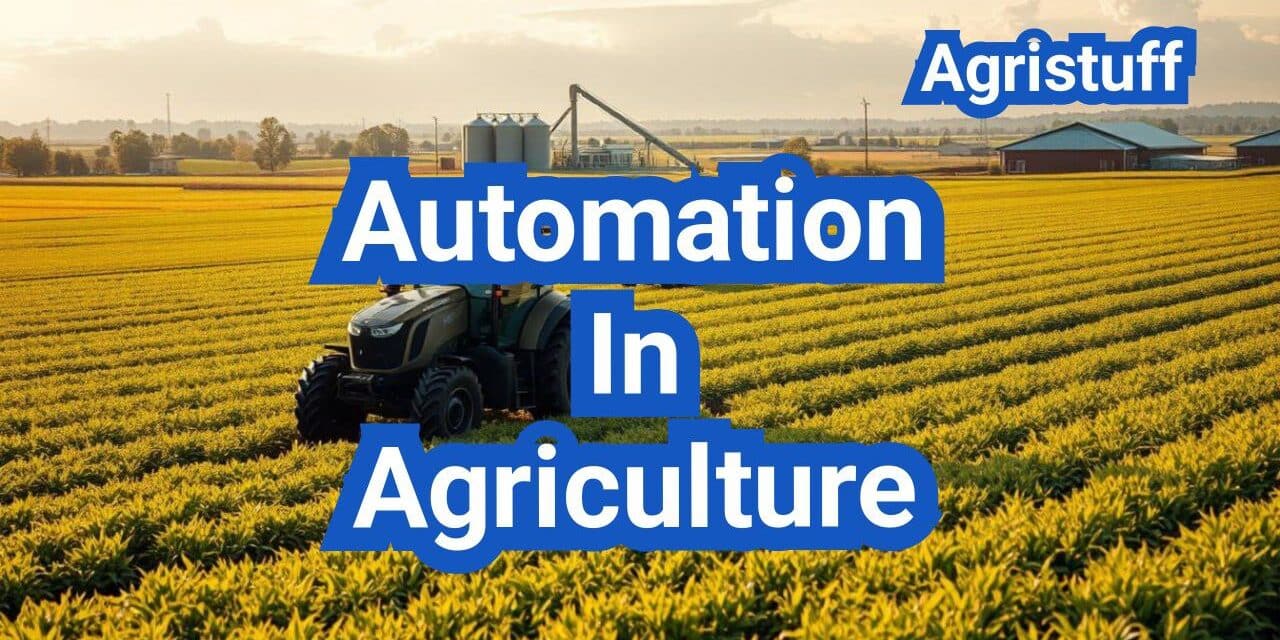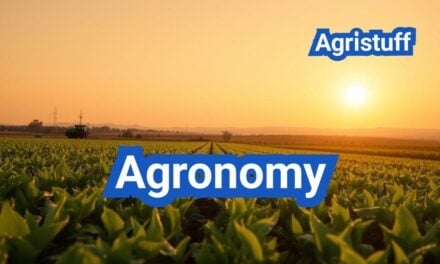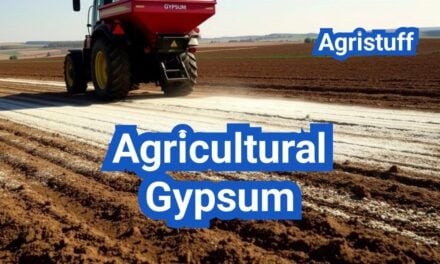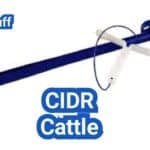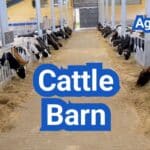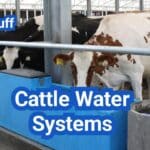The agricultural sector is undergoing a significant transformation with the integration of automation technologies. Driven by labor shortages and economic pressures, farmers are turning to innovative solutions to improve efficiency and safety.
Technologies such as GNSS auto-steer guidance and robotic milking systems are being adopted to enhance labor savings and reduce operational risks. By embracing farm automation, farmers can not only streamline their operations but also improve working conditions.
This article will explore the benefits of agricultural robotics and provide insights into where to start with implementing automation on your farm.
Key Takeaways
- Understanding the drivers behind the adoption of automation in agriculture.
- Exploring key technologies that are enhancing labor savings and safety.
- Guidance on implementing farm automation effectively.
- The role of agricultural robotics in modern farming practices.
- Strategies for overcoming common challenges in farm automation.
The Current State of Agricultural Automation in the USA
Agricultural automation is gaining traction in the USA, driven by economic pressures and labor shortages. The agricultural sector is facing significant challenges, including fluctuating market prices, rising operational costs, and a shrinking workforce.
Economic Pressures Driving Adoption
The economic landscape for farmers in the USA is becoming increasingly challenging. With thin profit margins and rising operational costs, farmers are under pressure to reduce expenses and increase efficiency. Agricultural automation offers a solution by enabling farmers to produce more with less labor, thereby improving their bottom line.
The adoption of automation technologies is also driven by the need to comply with increasingly stringent regulations and standards. By leveraging automation, farmers can ensure they meet these requirements while maintaining productivity.
Farm Labor Shortages and Their Impact
Farm labor shortages have become a significant issue in the USA, affecting the ability of farmers to maintain their operations. The shortage of skilled labor is particularly acute, with many farmers struggling to find workers with the necessary skills to operate complex farming equipment.
Labor shortages not only impact the productivity of farms but also lead to increased labor costs. As farmers compete for a dwindling workforce, wages rise, further squeezing profit margins. Agricultural automation helps mitigate these issues by reducing the reliance on manual labor.
By adopting automation technologies, farmers can not only address the immediate challenges posed by labor shortages but also position themselves for long-term success in a competitive market.
Understanding Automation in Agriculture

The agricultural sector is witnessing a significant shift towards automation, driven by the need for increased productivity and safety. As farms become more technologically advanced, understanding the concept and evolution of agricultural automation is crucial for farmers, agricultural businesses, and technology providers alike.
Defining Agricultural Automation
Agricultural automation refers to the use of technology to automate farming processes, enhancing efficiency, productivity, and safety. This encompasses a wide range of technologies, including machinery, robotics, and information technology, designed to streamline farm operations.
Evolution from Mechanization to Smart Farming
The journey of agricultural automation began with mechanization, where manual labor was replaced by machinery to increase efficiency. Over time, this evolved into precision agriculture, utilizing GPS and sensor technologies to optimize crop management. Today, we are in the era of smart farming, where automation, data analytics, and IoT technologies converge to create highly efficient and productive farming systems.
The evolution of agricultural automation can be summarized in the following table:
| Era | Key Technologies | Impact |
|---|---|---|
| Mechanization | Tractors, plows, harvesters | Increased efficiency, reduced manual labor |
| Precision Agriculture | GPS, sensors, variable rate application | Optimized crop management, reduced waste |
| Smart Farming | Automation, IoT, data analytics | Enhanced productivity, efficiency, and decision-making |
As we move forward, understanding and embracing these advancements in agricultural automation will be key to the success and sustainability of farming operations.
Key Benefits of Farm Automation
Farm automation is revolutionizing the agricultural sector by offering numerous benefits. The integration of automated systems in farming is transforming the way crops are managed and livestock are cared for.
Increased Productivity and Efficiency | Automation In Agriculture
One of the primary advantages of farm automation is the significant increase in productivity and efficiency. Automated systems can perform tasks faster and more accurately than manual labor, leading to improved crop yields and reduced waste.
For instance, automated irrigation systems can optimize water usage based on real-time soil moisture data, ensuring that crops receive the right amount of water at the right time. This not only improves crop health but also reduces the labor required for irrigation management.
Reduced Labor Costs | Automation In Agriculture
Farm automation can lead to substantial reductions in labor costs. By automating tasks such as planting, harvesting, and crop monitoring, farmers can minimize their reliance on manual labor, which is often in short supply and expensive.
A study on the economic benefits of farm automation found that farmers who adopted automated systems saw a significant decrease in labor costs, allowing them to allocate resources more effectively.
Enhanced Precision and Resource Management
Precision agriculture, facilitated by farm automation, enables farmers to manage resources more effectively. Technologies such as GPS-guided equipment and drones equipped with sensors allow for precise application of fertilizers, pesticides, and water.
This precision not only improves crop yields but also reduces the environmental impact of farming by minimizing the overuse of resources.
| Benefit | Description | Impact |
|---|---|---|
| Increased Productivity | Automated systems perform tasks faster and more accurately | Improved crop yields and reduced waste |
| Reduced Labor Costs | Minimized reliance on manual labor through automation | Significant decrease in labor expenses |
| Enhanced Precision | Precise application of resources using advanced technologies | Improved crop health and reduced environmental impact |
Safety Improvements Through Agricultural Automation
Automation in agriculture is transforming the way farmers approach worker safety. By leveraging advanced technologies, farms can significantly reduce workplace hazards and create a safer working environment for their employees.
Reducing Worker Exposure to Hazards | Automation In Agriculture
Agricultural automation plays a crucial role in minimizing worker exposure to hazardous conditions. For instance, automated systems can take over tasks that typically require workers to be exposed to harmful chemicals, extreme weather, or dangerous machinery.
Key benefits of reduced worker exposure include:
- Lower risk of accidents involving heavy machinery
- Reduced exposure to harmful pesticides and chemicals
- Less risk of injuries from extreme weather conditions
Minimizing Repetitive Strain Injuries | Automation In Agriculture
Automation also helps in reducing repetitive strain injuries (RSI) among farm workers. By automating repetitive tasks, farmers can significantly decrease the physical toll on their workers, leading to improved overall health and productivity.
Examples of automation reducing RSI include:
- Automated harvesting systems that reduce manual picking
- Robotic milking systems that minimize manual labor
- Mechanized sorting and packaging systems
Creating Safer Working Environments | Automation In Agriculture
By integrating automation technologies, farms can create inherently safer working environments. This not only protects workers but also contributes to a more efficient and productive farming operation.
| Safety Feature | Manual Operation | Automated Operation |
|---|---|---|
| Exposure to Chemicals | High Risk | Low Risk |
| Repetitive Strain Injuries | High Incidence | Low Incidence |
| Machinery Accidents | High Risk | Low Risk |
Field Operations Automation Technologies

Field operations automation is revolutionizing farming practices by enhancing efficiency and productivity. This transformation is largely driven by advanced technologies that streamline various farming processes.
GNSS Auto-Steer Guidance Systems | Automation In Agriculture
GNSS (Global Navigation Satellite System) auto-steer guidance systems have become a crucial tool in modern farming. These systems use satellite signals to guide tractors and other equipment with high precision, reducing overlap and improving accuracy.
The key benefits of GNSS auto-steer guidance include:
- Increased efficiency by minimizing overlap and reducing waste
- Improved accuracy in planting, spraying, and harvesting
- Reduced operator fatigue during long working hours
Variable Rate Application Technology | Automation In Agriculture
Variable Rate Application (VRA) technology allows farmers to apply inputs such as fertilizers, pesticides, and seeds at varying rates across a field. This is based on detailed data analysis and mapping, ensuring that resources are used more effectively.
The advantages of VRA technology include:
- Optimized input application, reducing waste and environmental impact
- Improved crop yields through targeted application
- Cost savings on inputs by applying them only where needed
Autonomous Tractors and Implements | Automation In Agriculture
Autonomous tractors and implements represent the latest frontier in field operations automation. These machines can operate independently, performing tasks such as plowing, planting, and harvesting with minimal human intervention.
The benefits of autonomous tractors and implements include:
- Increased productivity by enabling continuous operation without breaks
- Enhanced safety by reducing the risk of accidents caused by human error
- Improved precision in performing complex farming tasks
Crop Management Automation Solutions
With the integration of advanced technologies, crop management is becoming more automated, precise, and efficient. This shift is crucial for modern agriculture, where maximizing yields while minimizing waste and environmental impact is paramount.
Intelligent Sprayer Systems for Orchards | Automation In Agriculture
Intelligent sprayer systems represent a significant advancement in orchard management. These systems utilize precision agriculture techniques, including sensors and GPS technology, to optimize the application of pesticides and fertilizers. By targeting specific areas and adjusting the quantity of chemicals based on real-time data, farmers can reduce waste and minimize environmental contamination.
Automated Weeding and Harvesting Technologies | Automation In Agriculture
Automated weeding and harvesting technologies are revolutionizing crop management by reducing labor costs and increasing efficiency. Automated weeding systems use computer vision and AI to identify and remove weeds, reducing the need for herbicides. Similarly, automated harvesting technologies can pick crops at the optimal time, reducing loss and improving quality.
The benefits of these technologies are multifaceted. They not only reduce the physical strain on farmworkers but also enable farms to operate on a larger scale without a proportional increase in labor costs. Moreover, by optimizing the timing and method of weeding and harvesting, these systems can improve crop yields and quality.
As the agricultural sector continues to adopt automation solutions, the potential for improved productivity and sustainability grows. By embracing these technologies, farmers can not only enhance their operations but also contribute to a more sustainable food production system.
Livestock Farming Automation

The adoption of automation in livestock farming is revolutionizing the industry by enhancing efficiency and animal welfare. Automation technologies are being increasingly used to improve various aspects of livestock farming, from milking and feeding to health monitoring.
Robotic Milking Systems | Automation In Agriculture
Robotic milking systems are a prime example of automation in livestock farming. These systems allow for milking to be carried out automatically, without the need for human intervention. This not only reduces labor costs but also improves milking frequency and consistency, leading to better milk yields and quality.
The benefits of robotic milking systems include:
- Increased milking frequency
- Improved milk quality
- Reduced labor costs
- Enhanced cow comfort and welfare
Automated Feeding and Monitoring Solutions | Automation In Agriculture
Automated feeding systems ensure that livestock receive the right amount of feed at the right time, optimizing their nutritional intake. These systems can be programmed to dispense feed based on the animals’ needs, reducing waste and improving growth rates.
Monitoring solutions, such as sensors and cameras, enable farmers to keep track of their livestock’s health and behavior in real-time. This allows for early detection of any issues, enabling prompt intervention.
Key features of automated feeding and monitoring solutions include:
- Precision feeding based on individual animal needs
- Real-time monitoring of animal health and behavior
- Early detection of health issues
- Improved feed efficiency and reduced waste
Health Monitoring Technologies | Automation In Agriculture
Health monitoring technologies are crucial for maintaining the health and welfare of livestock. These technologies include wearable sensors that track vital signs, such as temperature and activity levels, and advanced data analytics that help identify potential health issues before they become severe.
The use of health monitoring technologies enables farmers to:
- Detect health issues early
- Improve animal welfare
- Reduce veterinary costs
- Enhance overall farm productivity
Water Management and Irrigation Automation

Automation in water management and irrigation is transforming the agricultural landscape by enhancing efficiency and reducing waste. As the agricultural sector faces increasing pressure to produce more with less, the role of automation in optimizing water use becomes ever more critical.
The adoption of advanced technologies in irrigation management not only helps in conserving water but also improves crop yields and quality. Two key technologies driving this change are irrigation scheduling sensors and smart water distribution systems.
Irrigation Scheduling Sensors | Automation In Agriculture
Irrigation scheduling sensors play a vital role in optimizing water application. These sensors monitor soil moisture levels, weather conditions, and crop water requirements in real-time, enabling farmers to make informed decisions about irrigation timing and volume.
Key benefits of irrigation scheduling sensors include:
- Reduced water waste through precise irrigation scheduling
- Improved crop health and yields due to optimal water application
- Energy savings from reduced pumping operations
By leveraging data from these sensors, farmers can adjust their irrigation practices to match the specific needs of their crops, thereby enhancing water use efficiency.
Smart Water Distribution Systems | Automation In Agriculture
Smart water distribution systems represent another significant advancement in irrigation automation. These systems utilize advanced technologies such as IoT devices, GPS, and data analytics to optimize water distribution across the farm.
The main features of smart water distribution systems include:
- Real-time monitoring of water flow and distribution
- Automated control of irrigation valves and pumps
- Data-driven insights for optimizing irrigation schedules
By integrating these technologies, farmers can achieve a more uniform and efficient water application, reducing the risk of over-irrigation and associated problems like waterlogging and nutrient leaching.
The combination of irrigation scheduling sensors and smart water distribution systems is revolutionizing water management in agriculture. By adopting these technologies, farmers can not only improve their water use efficiency but also contribute to the sustainability of agricultural practices.
Drone Technology in Modern Agriculture

The integration of drone technology in modern agriculture has revolutionized farming practices, offering unprecedented opportunities for crop monitoring, assessment, and management. Drones, or unmanned aerial vehicles (UAVs), equipped with various sensors and cameras, are becoming indispensable tools for farmers and agricultural professionals.
Applications for Crop Monitoring and Assessment
Drones are being increasingly used for crop monitoring and assessment, providing high-resolution imagery that helps farmers identify issues such as pest infestations, disease outbreaks, and nutrient deficiencies. This information enables farmers to take targeted actions, reducing the need for blanket treatments and improving crop yields.
The use of drones for crop monitoring also facilitates the creation of detailed topographic maps, which can be used to plan irrigation systems and monitor soil moisture levels. Furthermore, drones equipped with thermal imaging cameras can detect variations in soil moisture and crop stress, allowing for more precise irrigation management.
Understanding Part 107 Drone Rules for Agricultural Use
The use of drones in agriculture is subject to regulations set forth by the Federal Aviation Administration (FAA) under Part 107 rules. These regulations dictate how drones can be operated commercially, including in agricultural settings. To operate a drone under Part 107, pilots must obtain a Remote Pilot Certificate from the FAA.
Key requirements under Part 107 include maintaining a visual line of sight with the drone, operating during daylight hours (or civil twilight with proper lighting), and adhering to airspace restrictions. Understanding and complying with these regulations is crucial for farmers and agricultural businesses looking to integrate drone technology into their operations.
Data Management and Decision Support Systems
In the era of smart farming, data management and decision support systems play a vital role. The agricultural sector is witnessing a significant transformation with the adoption of advanced technologies that enable farmers to make informed decisions based on data analytics.
Farm Management Information Systems | Automation In Agriculture
Farm Management Information Systems (FMIS) are designed to support farmers in managing their agricultural operations more efficiently. These systems collect, store, and analyze data related to various aspects of farm management, such as crop yields, soil conditions, weather patterns, and equipment performance. By leveraging this data, farmers can optimize their farming practices, reduce costs, and improve productivity.
FMIS can provide valuable insights into farm operations, enabling farmers to make data-driven decisions. For instance, these systems can help in planning and scheduling farming activities, monitoring crop health, and predicting potential issues before they become critical.
Ensuring Farm Data Cybersecurity | Automation In Agriculture
As agricultural operations become increasingly dependent on data management systems, the importance of ensuring farm data cybersecurity cannot be overstated. Protecting sensitive farm data from unauthorized access, theft, or manipulation is crucial for maintaining the integrity of farm operations.
Farmers must implement robust cybersecurity measures to safeguard their data management systems. This includes using secure networks, encrypting sensitive data, and regularly updating software to prevent vulnerabilities. Additionally, educating farm staff about cybersecurity best practices is essential for preventing data breaches.
By prioritizing data management and cybersecurity, farmers can maximize the benefits of their automation investments while minimizing potential risks.
Integration of IoT in Automation in Agriculture
The integration of Internet of Things (IoT) technologies is revolutionizing agricultural automation. By connecting various devices and sensors, IoT enables real-time monitoring and data-driven decision-making, significantly enhancing farm productivity and efficiency.
Sensor Networks for Real-time Monitoring
Sensor networks play a crucial role in IoT-enabled agricultural automation. These networks consist of various sensors that monitor soil moisture, temperature, humidity, and crop health. The data collected is then transmitted to a central system for analysis, enabling farmers to make informed decisions.
Key benefits of sensor networks include:
- Real-time monitoring of farm conditions
- Early detection of potential issues such as pests or disease
- Optimized irrigation and fertilizer application
Cloud-based Farm Management Platforms | Automation In Agriculture
Cloud-based farm management platforms are essential for processing and analyzing the vast amounts of data generated by IoT devices. These platforms provide a centralized hub for data storage, analysis, and decision support.
Advantages of cloud-based platforms include:
- Scalability to accommodate growing data needs
- Accessibility from anywhere, at any time
- Advanced data analytics for insights into farm operations
Connectivity Solutions for Rural Areas
Rural connectivity remains a significant challenge for the adoption of IoT in agriculture. Reliable and fast internet connectivity is essential for the seamless transmission of data from IoT devices to cloud-based platforms.
Solutions to improve rural connectivity include:
- Expansion of cellular networks to cover rural areas
- Implementation of satellite internet services
- Development of community-based networks
By addressing these connectivity challenges, farmers can fully leverage the benefits of IoT technologies, leading to more efficient, productive, and sustainable agricultural practices.
Economic Analysis of Automation Investments
Investing in agricultural automation requires a thorough economic analysis to ensure a positive return on investment. As farmers adopt automation technologies, understanding the financial implications is crucial for making informed decisions.
Calculating Return on Investment
To calculate the ROI for automation investments, farmers must consider both the initial costs and the ongoing expenses. Initial costs include the purchase and installation of automation equipment, while ongoing expenses may include maintenance, fuel, and potential upgrades.
- Initial investment costs: equipment purchase, installation, and training
- Ongoing expenses: maintenance, fuel, and potential upgrades
- Potential savings: labor costs, reduced waste, and improved efficiency
By comparing these costs and savings, farmers can determine the ROI for their automation investments.
Labor Savings Quantification | Automation In Agriculture
One of the primary benefits of agricultural automation is labor savings. To quantify these savings, farmers should track the time spent on tasks before and after implementing automation technologies.
- Identify tasks that are automated
- Measure the time saved per task
- Calculate the labor cost savings based on the time saved
For example, a farm that implements automated milking systems may see a significant reduction in labor costs associated with milking.
Long-term Economic Benefits | Automation In Agriculture
Beyond immediate labor savings, agricultural automation can provide long-term economic benefits. These may include:
- Increased crop yields due to more precise farming techniques
- Reduced waste through optimized resource allocation
- Improved crop quality leading to higher prices
By considering these long-term benefits, farmers can make a more comprehensive assessment of the economic viability of automation investments.
In conclusion, a thorough economic analysis is essential for farmers considering investments in agricultural automation. By calculating ROI, quantifying labor savings, and assessing long-term economic benefits, farmers can make informed decisions that support their financial sustainability.
Funding Options for Agricultural Automation
Agricultural automation is becoming increasingly accessible thanks to a range of funding options designed to support farmers in adopting new technologies. As the agricultural sector continues to evolve, the initial investment in automation can be substantial, yet numerous financial assistance programs are available to help offset these costs.
NRCS EQIP Cost-Share Programs | Automation In Agriculture
The Natural Resources Conservation Service (NRCS) offers the Environmental Quality Incentives Program (EQIP) to provide financial assistance to farmers adopting conservation practices, including agricultural automation. EQIP can help cover the costs of implementing new technologies that improve resource management and reduce environmental impact.
Key benefits of NRCS EQIP include:
- Cost-share payments to implement conservation practices
- Technical assistance to help farmers choose the right practices
- Incentives for adopting innovative technologies
Grants and Financing Opportunities | Automation In Agriculture
Besides NRCS EQIP, various grants and financing opportunities are available to support agricultural automation. Government agencies, private organizations, and agricultural cooperatives offer programs to help farmers access the capital needed for automation investments.
For instance, the USDA’s National Institute of Food and Agriculture (NIFA) provides grants for projects that enhance agricultural productivity through technology and innovation. Farmers can explore these opportunities to find the best fit for their needs.
Tax Incentives for Technology Adoption | Automation In Agriculture
Tax incentives can also play a crucial role in reducing the financial burden of adopting agricultural automation. The IRS offers various deductions and credits for investments in farm equipment and technology, including automation systems.
“Farmers can benefit from Section 179 deductions, which allow for the immediate expensing of eligible equipment purchases, including automation technologies.” – IRS Guidelines
By leveraging these tax incentives, farmers can significantly reduce their taxable income, making it easier to invest in automation.
In conclusion, the adoption of agricultural automation is supported by a variety of funding options, from NRCS EQIP cost-share programs to grants, financing opportunities, and tax incentives. By exploring these avenues, farmers can make informed decisions about investing in automation technologies that enhance their operations.
Where to Start with Farm Automation
Embarking on the journey of farm automation can be daunting, but with a clear starting point, farmers can navigate the process with confidence. The key to a successful transition lies in understanding the current state of operations and identifying areas where automation can have the most significant impact.
Assessing Current Operations and Pain Points
The first step in implementing farm automation is to conduct a thorough assessment of current operations. This involves identifying pain points and areas where manual labor is causing inefficiencies or increasing costs. Farmers should evaluate their equipment, labor force, and existing technology to determine where automation can provide the most significant benefits.
By analyzing daily operations, farmers can pinpoint specific tasks that are repetitive, labor-intensive, or prone to human error. This assessment will help in creating a clear picture of where automation can make a substantial difference.
Prioritizing Automation Investments | Automation In Agriculture
Once the pain points are identified, the next step is to prioritize automation investments. This involves evaluating the potential return on investment (ROI) for different automation technologies and determining which ones will have the most significant impact on the farm’s productivity and efficiency.
Farmers should consider factors such as the cost of implementation, potential labor savings, and the expected increase in productivity. By prioritizing investments based on these factors, farmers can ensure that they are allocating their resources effectively.
Developing a Phased Implementation Plan | Automation In Agriculture
A successful automation strategy involves developing a phased implementation plan. This approach allows farmers to introduce new technologies gradually, minimizing disruption to existing operations and ensuring a smooth transition.
The plan should outline the specific automation technologies to be implemented, the timeline for implementation, and the resources required. By breaking down the implementation process into manageable phases, farmers can monitor progress, address any issues that arise, and make adjustments as needed.
By following these steps, farmers can ensure a successful transition to farm automation, enhancing their productivity, efficiency, and competitiveness in the agricultural market.
Overcoming Challenges in Implementing Automation
Farmers face numerous obstacles when adopting automation technologies, from technical skills gaps to system integration issues. Implementing automation in agriculture requires a strategic approach to overcome these challenges effectively.
Technical Skills Development | Automation In Agriculture
One of the primary challenges in agricultural automation is the development of technical skills among farm workers. As automation technologies become more prevalent, the need for workers who can operate, maintain, and troubleshoot these systems increases. Training programs are essential to bridge this skills gap.
To address this challenge, farmers can invest in comprehensive training programs that cover the operation and maintenance of automation technologies. For instance, manufacturers of automated farming equipment often provide training sessions for farmers and their staff.
Integration with Existing Systems | Automation In Agriculture
Another significant challenge is integrating new automation systems with existing infrastructure. This requires careful planning to ensure compatibility and seamless interaction between old and new systems. Compatibility assessments should be conducted before implementing new technologies.
| Integration Challenge | Solution |
|---|---|
| Compatibility Issues | Conduct thorough compatibility assessments |
| System Interoperability | Use standardized communication protocols |
| Data Management | Implement robust data management systems |
Managing the Transition Period | Automation In Agriculture
Managing the transition to automated systems is crucial to minimize disruptions to farm operations. A phased implementation approach can help in gradually introducing new technologies, allowing workers to adapt, and reducing the risk of operational downtime.
During the transition period, it’s essential to monitor the performance of new systems closely and address any issues promptly. This proactive approach helps in identifying and resolving problems early, ensuring a smoother transition.
The Future of Agricultural Automation
The future of agricultural automation is poised to revolutionize farming practices through the adoption of smart farming technologies and agricultural robotics. As advancements in AI, robotics, and IoT continue to drive growth, the agricultural sector is expected to become increasingly efficient and productive.
Future agricultural automation will likely focus on enhancing precision and reducing labor costs. Smart farming technologies, such as autonomous tractors and drones, will play a crucial role in this transformation. Agricultural robotics will also contribute to improved crop management and livestock farming.
As the sector continues to evolve, farmers and agricultural businesses must be prepared to adapt to new technologies and innovations. By embracing future agricultural automation, they can capitalize on the opportunities presented by smart farming and agricultural robotics, ultimately shaping a more sustainable and productive agricultural industry.
FAQ
What is agricultural automation?
Agricultural automation refers to the use of technology to automate farming processes, improving efficiency, productivity, and safety. It encompasses a range of technologies, including robotics, drones, and precision agriculture.
How does automation improve labor safety in agriculture?
Automation reduces worker exposure to hazards, minimizes repetitive strain injuries, and creates safer working environments by taking over tasks that are physically demanding or hazardous.
What are some examples of field operations automation technologies?
Examples include GNSS auto-steer guidance systems, variable rate application technology, and autonomous tractors and implements, which improve the efficiency and precision of farming operations.
How can drone technology be used in agriculture?
Drones are used for crop monitoring and assessment, allowing farmers to identify issues early and make data-driven decisions. They are also used for precision agriculture, such as crop spraying and seeding.
What is the role of IoT in agricultural automation?
IoT technologies, including sensor networks and cloud-based farm management platforms, enable real-time monitoring and data-driven decision-making, improving the efficiency and productivity of farming operations.
How can farmers fund the adoption of automation technologies?
Farmers can access funding through NRCS EQIP cost-share programs, grants, and financing opportunities, as well as tax incentives for technology adoption.
What are the key benefits of adopting farm automation?
The key benefits include increased productivity and efficiency, reduced labor costs, and enhanced precision in resource management, leading to improved crop yields and reduced waste.
How can farmers get started with farm automation?
Farmers should assess their current operations to identify pain points, prioritize automation investments based on need and potential impact, and develop a phased implementation plan to ensure a smooth transition.
What are some challenges of implementing automation in agriculture?
Challenges include the need for technical skills development, integrating new automation systems with existing infrastructure, and managing the transition period to minimize disruptions.
How does automation impact water management in agriculture?
Automation improves water management through irrigation scheduling sensors and smart water distribution systems, contributing to more efficient water use and reduced waste.
What is the future of agricultural automation?
The future of agricultural automation is expected to be shaped by advancements in technologies such as AI, robotics, and IoT, leading to further improvements in efficiency, productivity, and sustainability.
Conclusion of: Automation In Agriculture
Why automation in agriculture matters now
Automation in agriculture is no longer a buzzword—it’s a practical toolkit U.S. farmers use to cut labor costs, reduce risk, and increase consistency from planting to harvest. Driven by tight labor markets, input inflation, and razor-thin margins, producers are adopting guidance systems, variable-rate tools, robotic milking, intelligent sprayers, and digital recordkeeping to do more with less while protecting workers and the environment. The key is knowing where to start so payback is fast and future upgrades plug in cleanly. USDA ERS report on precision agriculture adoption
What “automation in agriculture” really means
At its core, automation in agriculture blends sensors, software, and machines to reduce manual steps and variability. On the simpler end are GNSS guidance and section control; moving up the ladder you’ll see sensor-guided irrigation, drones for scouting, variable-rate prescriptions, and in some operations, robotic milking or autonomous specialty-crop sprayers. Think of a stack: guidance for accuracy, sensing for decisions, and actuation for hands-free execution—each layer compounding value as systems connect. USDA ERS: digital tech stack in farming
Labor pressure is accelerating automation in agriculture
Persistent labor shortages and rising wages are pushing more producers toward automation in agriculture to stabilize throughput and costs. At the same time, U.S. reliance on seasonal H-2A labor has increased, adding compliance and recruiting complexity—another nudge toward labor-saving tech that makes crews more productive and reduces exposure to repetitive or hazardous tasks. USDA ERS: Farm labor trends
Start with guidance: the foundation of automation in agriculture
Few upgrades rival GNSS guidance and auto-steer as the first step in automation in agriculture. Accurate passes reduce skip and overlap, improve field efficiency, and lower operator fatigue—a triple win during long planting and harvest days. The practical result is cleaner headlands, straighter rows, and reliable inputs placement that sets the table for advanced precision tools. University of Nebraska–Lincoln: Precision agriculture overview
Quantifying the savings from guidance and section control
When you quantify automation in agriculture, guidance plus section control usually delivers fast ROI by trimming overlaps in seed, fertilizer, and chemicals while shaving fuel and machine hours. Even modest reductions in pass-to-pass error translate into thousands of dollars per season across medium-sized acreages—savings that can finance your next tech rung. Idaho National Laboratory: GPS guidance benchmark study
Safety first: the human upside of automation in agriculture
Beyond efficiency, automation in agriculture measurably improves safety. Closed-transfer systems, targeted spraying, and cab guidance reduce exposure to chemicals and fatigue-related mistakes. Agriculture remains a high-risk sector for injuries and fatalities; shifting repetitive and hazardous tasks to machines is a practical pathway to fewer incidents and a healthier workforce. CDC/NIOSH: Agriculture worker safety
Targeted application: use less, waste less
“See-and-spray” and intelligent sprayers embody automation in agriculture by applying inputs only where cameras or sensors detect need. Specialty-crop trials show substantial reductions in off-target deposition and total pesticide use while maintaining control—savings that compound through lower chemical spend, fewer worker exposures, and improved environmental outcomes. USDA ARS: Intelligent sprayer benefits
Connectivity: the plumbing behind automation in agriculture
Before adding robots, get the “plumbing” right for automation in agriculture—connectivity, device management, and data flow. Reliable broadband in and around fields enables real-time prescriptions, remote diagnostics, and seamless file transfer. Building this backbone early prevents data silos and ensures hardware from different vendors can work together. FCC: Precision Ag Connectivity Task Force
Tier 1: retrofit guidance as your first automation in agriculture
Retrofit displays and steering kits add immediate value to existing tractors, making this a classic “first domino” in automation in agriculture. Start with light-bar guidance if budgets are tight; step up to assisted or integrated auto-steer for hands-off straight lines, smoother headlands, and reduced fatigue that helps operators stay precise at midnight as well as noon. UNL Extension: Guidance and auto-steer basics
Tier 1: irrigation scheduling with sensors
For irrigated acres, soil-moisture sensors are a high-leverage entry into automation in agriculture. Tensiometers, capacitance probes, and data loggers keep water in the root-zone “sweet spot,” improving yields and quality while trimming pumping costs. Start with a couple of stations in your thirstiest field and build a weekly scheduling routine. UC ANR: Soil moisture sensors guide
Tier 1: telematics and digital recordkeeping
Telematics turns engine hours, fuel use, and implement activity into automatic records—another quiet win for automation in agriculture. With basic dashboards, you can spot idling, benchmark efficiency, and document jobs for compliance or custom work. Clean records also speed up ROI tracking on future upgrades like variable-rate. USDA ERS: Digital farm data adoption
Tier 2: drones for scouting—know the rules
Small UAS now play a standard role in automation in agriculture for stand counts, stress mapping, and post-storm assessments. If you fly commercially in the U.S., Part 107 governs certification, airspace, and operations; specialized approvals apply to spraying. Build a repeatable flight-and-review workflow to turn images into actionable decisions. FAA: Part 107 remote pilot rules
Tier 2: variable-rate + section control
Combining maps, guidance, and rate control is a hallmark of automation in agriculture. Prescription seeding, variable nitrogen, and automatic boom or row shutoffs reduce waste while holding or lifting yield. Start with one input on one field, document savings, and expand as agronomics and data quality improve. USDA ERS: Variable-rate technology adoption
Tier 2: robotic milking in dairies
Robotic milking is one of the most visible forms of automation in agriculture on U.S. dairies, delivering labor savings per cow, more consistent routines, and rich data for herd health. Success hinges on parlor layout, cow flow, and data integration, but many herds see time-per-hundredweight and labor-hour reductions after transition. UW–Extension: Labor savings with automated milking
Specialty crops: intelligent sprayers pay twice
For orchards, vineyards, and nurseries, intelligent sprayers are high-impact automation in agriculture because they cut off-target drift and reduce chemical volume while maintaining control. That double win—cost and compliance—adds up fast on perennial crops where canopy density changes across the season. USDA ARS: Intelligent sprayer research
Compliance and worker protections
As you scale automation in agriculture around chemical handling and field tasks, align with U.S. worker-safety rules. The EPA’s Worker Protection Standard outlines minimum training, PPE, notification, and recordkeeping to reduce pesticide exposure incidents—requirements that tech can help you implement and document. EPA: Agricultural Worker Protection Standard
Tap incentives that fund automation in agriculture
Federal cost-share can defray capital costs for conservation-minded automation in agriculture, such as sensor-guided irrigation, nutrient management, or reduced-drift application. Explore practices and eligibility under the NRCS Environmental Quality Incentives Program (EQIP), and coordinate early with your local field office. USDA NRCS: EQIP program
Cybersecurity for connected farms
Connected equipment, cameras, and cloud tools make automation in agriculture productive—but also expand your cyber attack surface. Basic hardening goes a long way: timely updates, strong passwords with MFA, segmented networks for OT vs. office, and offline backups. Train staff on phishing and incident response. CISA: Ransomware guide
Measuring ROI: a simple framework
Treat each step of automation in agriculture like an investment: establish baselines (labor hours/acre, fuel/hr, inputs/acre, rejects), run a small pilot, and scale only when KPIs move in the right direction. Annualize costs, include maintenance and subscriptions, and calculate payback periods to prioritize upgrades objectively. USDA ERS: Measuring benefits of precision tech
A 90-day starter plan for small to mid-size farms
Month 1: add display + light-bar or auto-steer to your primary tractor; Month 2: install soil-moisture sensors on your thirstiest field and build a scheduling routine; Month 3: set up a Part 107 drone scouting workflow. This staged approach to automation in agriculture builds skills and savings that fund future steps like variable-rate. FAA: Part 107 certification overview
FINAL THOUGHT
The surest path is to start with the “boring” wins—guidance, scheduling, and records—then let those savings finance the next rung of automation in agriculture, whether that’s intelligent spraying, variable-rate, or robotics. Keep your crew trained, your data secure, and your ROI measured, and you’ll compound advantages season after season. USDA ERS: Precision agriculture synthesis
Sources & References
- USDA ERS — Farm Labor Topic Page
- U.S. Department of Labor — Foreign Labor Certification Performance Data (H-2A)
- University of Nebraska–Lincoln Extension — Precision Agriculture
- Idaho National Laboratory — GPS Guidance Benchmark Study
- CDC/NIOSH — Agriculture Worker Safety & Health
- USDA ARS — Intelligent Sprayer Benefits
- University of Wisconsin Extension — Automated Milking Systems
- CISA — Ransomware Guide
- EPA — Agricultural Worker Protection Standard

